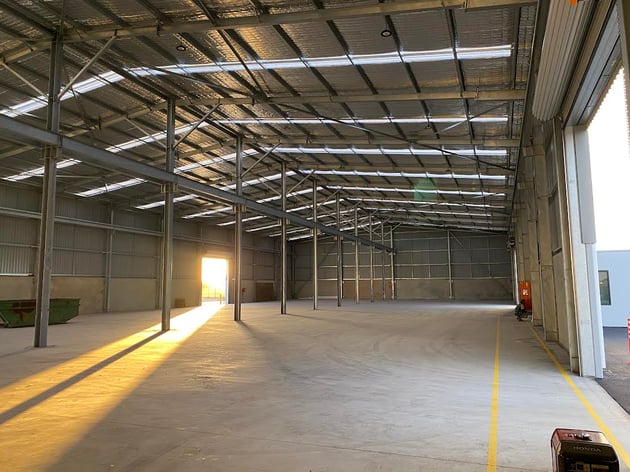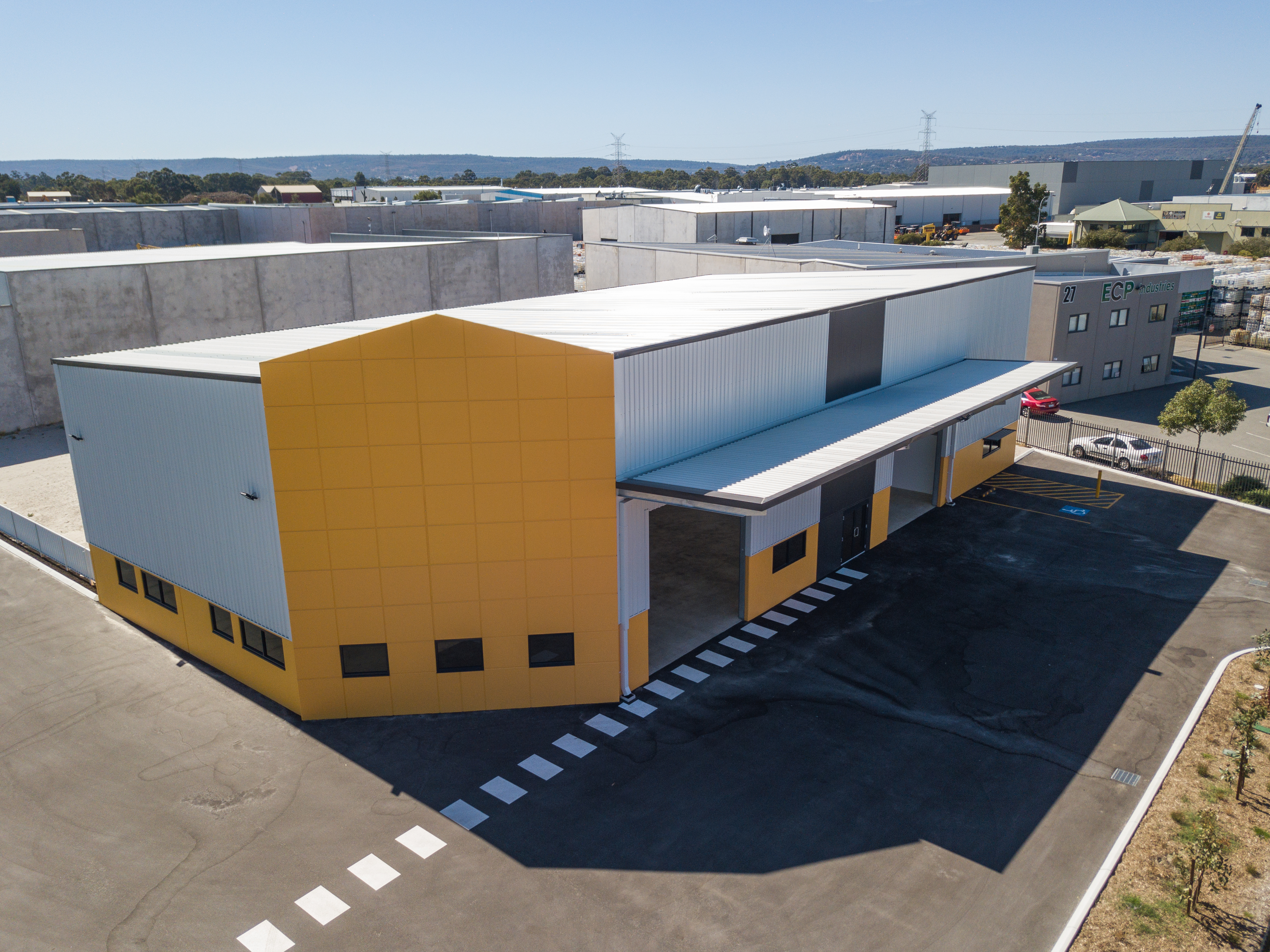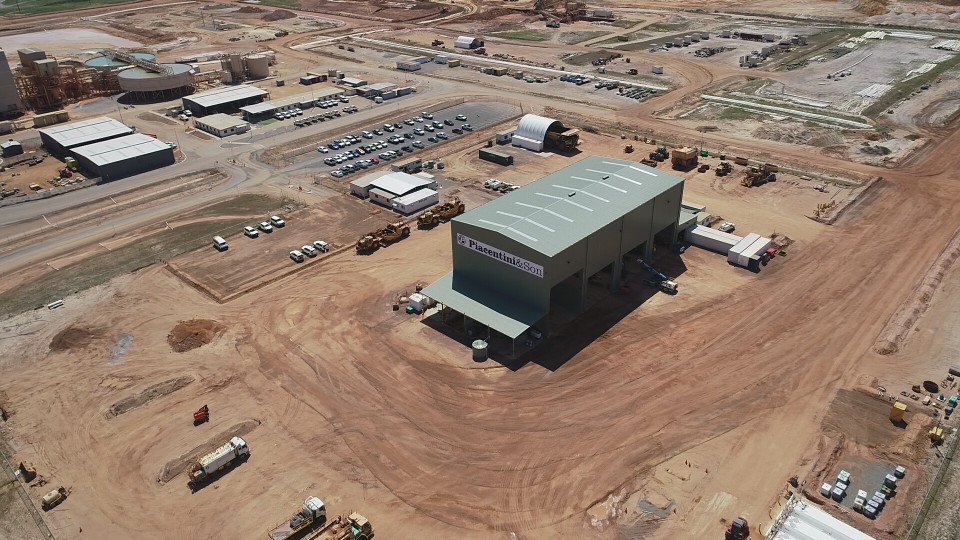How Long Does It Take to Build a Warehouse?
Navigating the intricate processes of logistics, planning, and construction, and the question of how long it takes to build a warehouse consistently raises the curiosity of entrepreneurs, logistics, managers, and investors alike. Recognising the complexities and varied timelines when building a warehouse is important, as it is not merely just a construction task, but an array of meticulous planning, steadfast execution, and navigating through a web of legalities and compliances. Each warehouse, with its unique specifications, purposes, and challenges, has a distinct narrative and chronological journey throughout the duration of the project.
Factors That Affect Warehouse Construction Timelines
Planning and Design
For warehouse builders, the initial phase involves assessing needs, defining objectives, and creating architectural designs. The complexity and specificity of the design directly impact the overall construction timeline. With careful consideration and time management, the planning and design phase involves the collaboration of various stakeholders such as architects, engineers, and operational managers to formulate a practical and efficient design.
Permit and Regulations
Complying with local, state, and federal design and construction regulations can be a lengthy process. Securing permits involves submitting designs for approval, and ensuring they meet all zoning laws, environmental standards, and building codes, which can result in revisions and adaptations of initial plans.
Site Preparation
The condition and location of the construction site can influence the timeline significantly. Unavoidable factors like terrain, accessibility, and any required preparation, such as levelling, clearing vegetation, or addressing drainage issues, can add to the duration of the project.
Material Availability
The construction of a warehouse is heavily reliant on a multitude of materials – from the steel used in structural frameworks to the concrete slabs for flooring, and from electrical wiring to plumbing pipes. The availability and delivery of these materials can significantly affect a warehouse builder’s schedule. Global or local supply chain issues, custom material requirements, and logistical challenges may introduce delays in getting the necessary materials to the site on time.
Labour Availability
The labour force, acting as the backbone of any construction project, plays an indispensable role in shaping and constructing a warehouse. The availability, skill level, and efficiency of the labour force are crucial for maintaining the project timeline. A shortage of skilled labour or illnesses can delay various phases of the construction process. Understanding and acknowledging the potential challenges related to labour forces enable project managers and warehouse builders to devise proactive strategies.
Technology and Equipment
The use of technology and machinery plays a pivotal role in streamlining construction. Any malfunctions, unavailability, or inefficiency in equipment or technology can slow down the process and extend the construction period.
Project Management
Effective project management ensures that all aspects of the construction process, from resource allocation to scheduling and quality control, are executed smoothly. Mismanagement or lack of coordination among different teams can result in project delays and cost overruns.
Understanding and navigating through these factors with adept management and meticulous planning can steer the warehouse construction project towards a timely and successful completion, ensuring it aligns with both its functional objectives and regulatory compliance.
Warehouse Shed Sizing Permits and Regulations
Western Australia (WA), like other regions, has its own specific set of permits and regulations concerning the construction and operations of warehouse sheds. The regulatory framework in WA is designed to ensure the safety, environmental sustainability, and appropriate use of land.
Local Government Authority
In Western Australia, the primary responsibility for planning and development approvals typically lies with the local government or council. Each local council may have its own set of planning policies and development standards, which can influence the size, height, and placement of warehouse sheds.
Planning and Development Act
The Planning and Development Act 2005 governs land use and development in WA. It provides the legislative backdrop for planning decisions made by local governments and the State Administrative Tribunal.
Zoning and Land Use
Different zones in WA, as defined in local planning schemes, have specific purposes and associated development standards. For warehouse sheds, relevant zones might include “Industrial” or “Mixed Business”. Each zone will have its setbacks, coverage, height, and other site requirements.
Environmental Considerations
Western Australia has significant environmental diversity. Building in areas near wetlands, native vegetation, or other ecologically sensitive sites may necessitate additional environmental assessments or approvals.
Access and Infrastructure
Regulations might dictate requirements for vehicle access, parking, and loading docks. This ensures that the warehouse operates efficiently without causing traffic disruptions or safety concerns.
Utilities and Services
The provision of utilities like water, electricity, sewage, and stormwater drainage may have specific standards and connection requirements, especially in industrial zones.
Operational Considerations
In certain cases, the operations within the warehouse shed might need specific permits, especially if they involve hazardous materials, significant noise, or other potential disturbances.
Regular Inspections and Compliance
Post-construction, warehouse sheds may be subject to regular inspections to ensure they remain compliant with safety standards, environmental regulations, and operational permits.
Heritage and Cultural Considerations
If the proposed site for the warehouse shed is near or in a location with heritage or cultural significance, additional approvals may be required to ensure the protection of these sites.
The relationship between warehouse shed sizing permits and regulations and the timeframe for building a warehouse is significant and intricate. The process of obtaining permits and complying with regulations often directly impacts the construction timeline for warehouse builders. Here’s how:
- Preconstruction Delays: Time spent preparing, submitting, and waiting for permit approvals before starting construction.
- Design Modifications: Revisions to plans due to regulatory non-compliance extending the planning phase.
- Staged Approvals: Phased construction approvals can interrupt the continuous flow of the building process.
- Environmental and Site Assessments: Required assessments on environmental impact can introduce delays.
- Operational Permits: Waiting for operational approvals can delay the warehouse’s readiness for use.
- Unforeseen Regulatory Challenges: Unexpected changes in interpretations of regulations can lead to unplanned adjustments.
- Public or Neighbour Objections: Addressing public concerns may necessitate design changes or legal considerations.
- Logistics and Infrastructure Requirements: Regulatory standards on infrastructure can influence the construction timeline.

What is the Value of Building a Warehouse?
Warehouses stand as more than mere storage spaces; they represent a convergence of strategic advantage, economic potential, and supply chain optimisation. The value of building a warehouse can be understood from various dimensions, including economic, operational, strategic, and societal perspectives. Here’s a breakdown of the value proposition associated with warehouse construction:
Economic and Operational Benefits
Building a warehouse brings pronounced economic benefits. As a tangible asset, warehouses can appreciate over time, offering potential returns on investments. Beyond asset appreciation, owning a warehouse translates to long-term cost savings compared to perpetual renting or leasing, especially in areas with surging real estate prices. From an operational standpoint, warehouses play a pivotal role in refining inventory management. They provide a controlled environment to optimise inventory, reducing stock-related discrepancies.
Strategic and Competitive Advantages
Strategically, warehouses serve as linchpins in the supply chain, granting businesses enhanced control over logistics, storage, and distribution. Their strategic placement can drastically reduce transportation costs, expedite delivery times, and cater efficiently to key markets. This geographical advantage, coupled with efficient warehouse operations, aids
businesses in reducing delivery times and enhancing customer service, thereby offering a significant competitive advantage.
Societal and Environmental Impacts
On a broader scale, warehouse construction and subsequent operations invigorate local economies by generating employment opportunities. Modern warehouses also lean into sustainability, often integrating eco-friendly technologies that mitigate environmental impact. By reducing carbon footprints and championing energy efficiency, these structures resonate with a growing global emphasis on sustainability. Additionally, by facilitating storage and logistical solutions, warehouses bolster local businesses, fostering community development and economic growth.
What Types of Costs Should I Expect?
When considering the construction of a warehouse, one must be prepared for the associated costs outside the obvious expenditures of land acquisition and building materials. Initial outlays include architectural and design fees, permits, and regulatory compliance costs. The construction phase encompasses expenses related to site preparation, foundational work, structural elements, roofing, insulation, electrical and plumbing installations, and specialised features like loading docks or climate-controlled areas. Additionally, considerations for interior fit-outs, security systems, and technological infrastructure, such as warehouse management systems or automation tools, will add to the financial layout. Moreover, it’s vital to factor in contingency funds for unforeseen complications, and post-construction costs, such as utility connections, landscaping, and initial maintenance tasks, ensuring a holistic financial perspective on the warehouse building venture. Get an estimate on how much your shed will cost today with our instant budget estimator tool.
Setting Yourself Up For Success
Choosing AUSPAN as your commercial builder ensures a seamless journey from conception to the realisation of your warehouse project. With the intricate web of permits, regulations, design complexities, and the multifaced value warehouses bring to business, it becomes imperative to partner with a seasoned expert. AUSPAN, given its reputed proficiency in navigating these complexities, guarantees not just the timely and compliant construction of your warehouse but also ensures that all aspects – from design modifications to regulatory compliance – are adequality handled, promising a warehouse that stands as a testament to quality, efficiency, and strategic advantage.
Want us to take care of all of the above for you? Contact AUSPAN today via email and enquire about our commercial shed options. Alternatively, get in touch by giving us a call on 1300 271 220.
 sales@auspangroup.com.au
SEND US A MESSAGE
sales@auspangroup.com.au
SEND US A MESSAGE
 1300 271 220
CALL US
1300 271 220
CALL US




-1.png)